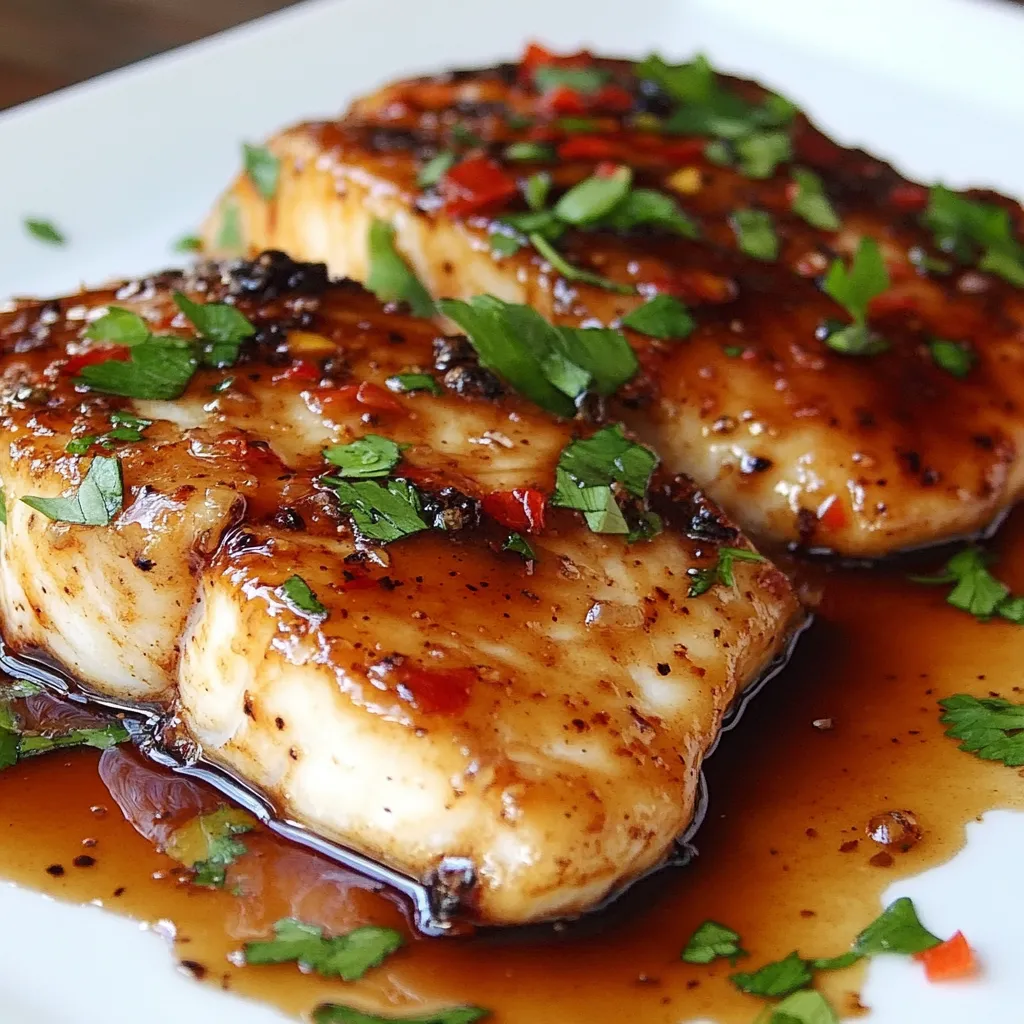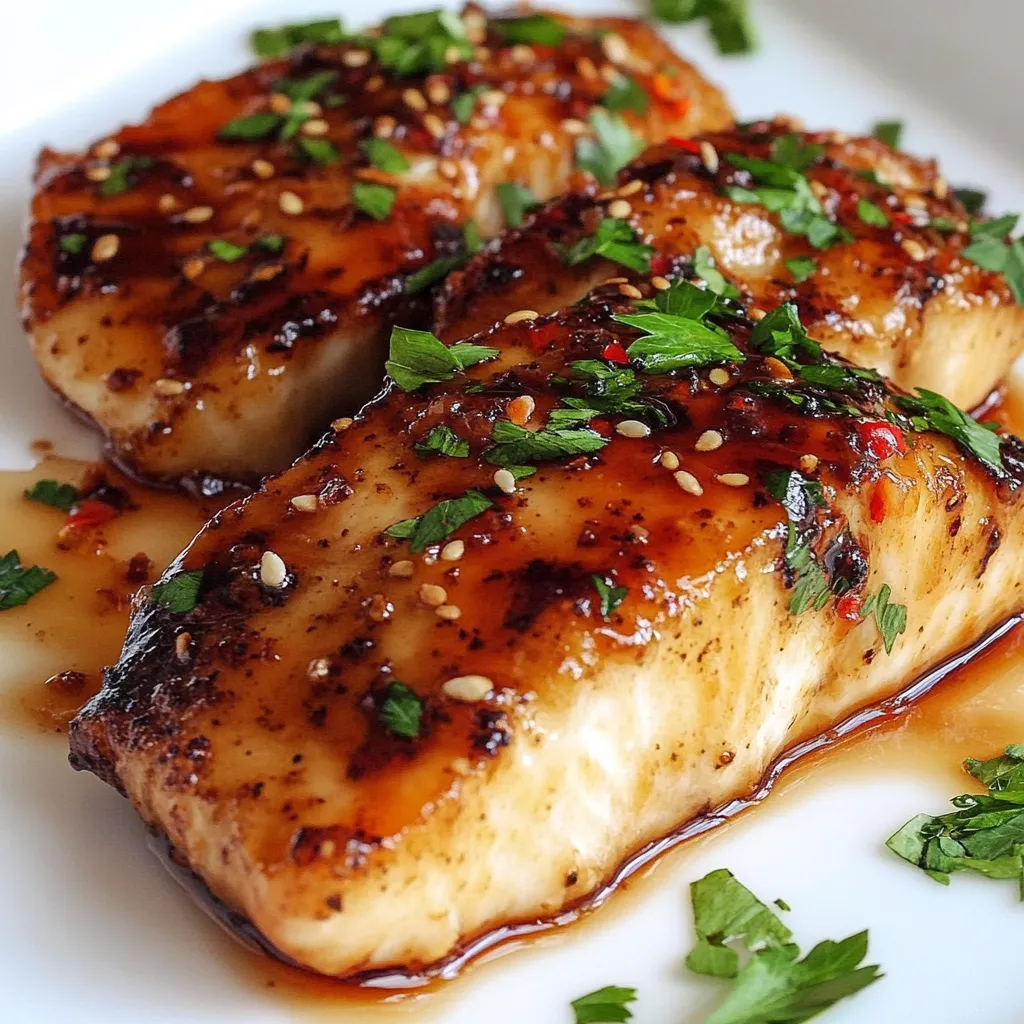 Pin it
Pin it
Tender rock cod coated in a flavorful ginger-soy mixture makes an impressive homemade meal that rivals any restaurant dish. The light, white meat works wonderfully with the rich umami Asian-inspired coating, giving you something that's both familiar and fancy. I've made this countless times at home, and I can tell you it's become our go-to favorite that always turns out amazing.
I first tried making this during a hectic evening when I had to use some leftover ginger. The mix turned out so good that I now cook it regularly, especially when I want to wow dinner company without being stuck in the kitchen forever.
Fantastic Ingredients Guide
- Rock Cod Fillets: Pick ones that feel firm, look clear, and smell fresh like the ocean. Good fillets will bounce back when you touch them
- Fresh Ginger Root: Go for pieces with unwrinkled, smooth skin that smell zingy when you scratch them. Younger ginger gives you the strongest flavor
- Quality Soy Sauce: Go for traditionally brewed types for richer taste and better flavor layers
- Rice Vinegar: Get plain unseasoned vinegar so you can tweak the taste yourself
- Nearby Honey: Unprocessed honey tastes best and helps make a beautiful shiny coating
Crafting Your Delicious Dish
- First Steps:
- Wipe your fish dry completely. Good prep makes sure it cooks evenly and soaks up more flavor.
- Sauce Creation:
- Blend ginger, soy sauce, and honey till it's smooth. It should smell amazing and balanced.
- Prepping the Fish:
- Cover fillets completely in the mixture. Let everything sit together at room temp.
- Cooking Time:
- Get your pan hot enough to sizzle, then cook until the fish turns golden and flakes easily. Look for that lovely browning.
I grew up in a family near the water, where I learned to treat seafood with care. Ginger became my favorite way to make basic fish dishes taste special, particularly after watching my grandma cook with it. She always told me the secret was finding just the right mix between ginger's kick and honey's sweetness.
Picking The Best Fish
Knowing your fish is key to making this dish shine. This adaptable white fish, sometimes called Pacific snapper, has a subtle, clean taste that works with lots of cooking styles. When buying fish, check for bright clear eyes on whole fish, or see-through, firm flesh for fillets. The meat should bounce back when you press it gently and shouldn't smell fishy at all.
 Pin it
Pin it
Perfecting Your Sauce
What makes this dish special is how all the flavors work together. Each part of the sauce adds something important without drowning out the mild fish. After trying this many times in my kitchen, I've found that mixing the sauce ingredients about 10 minutes before adding the fish makes everything taste better together.
Great Side Dishes
Make this into a full meal with the right sides. Plain jasmine rice works great for soaking up the tasty sauce, while quickly cooked snow peas add some nice crunch. From my experience, having a small dish of extra sauce on the table lets everyone add more if they want.
Tasty Variations
Try these changes to match what you like or what you've got in your pantry. Swap tamari for soy sauce if you can't have gluten, or try a bit of sesame oil for nutty flavor. My favorite twist is adding finely chopped lemongrass to the mixture for a bright citrus note that lifts the whole dish.
Storage Tips
Put any leftover fish in a sealed container with parchment paper between layers so it doesn't stick. The cooked fish stays good for about two days in your fridge. When warming it up, wrap it in foil and heat it slowly in a cool oven to keep it moist.
After making this dish for years, I really love how it combines basic ingredients into something amazing. The secret is treating each part with care – from picking fresh fish to watching the cooking time closely. This meal shows that sometimes the simplest cooking gives the best results, especially when you focus on good ingredients and proper methods.
Managing Your Heat
Getting the temperature right is super important for perfectly cooked fish. Start hot to get that nice golden outside, then turn it down to make sure the middle cooks without burning the outside. Watch the edges turn white – that's your sign it's time to flip it over.
 Pin it
Pin it
All About Ginger
Learning what ginger does in this dish opens up so many flavor options. Young ginger has a lighter, more flowery taste, while older ginger gives you deeper, spicier heat. I've noticed that grating ginger lets out more oils than chopping it, which makes it stronger in the sauce.
Helpful Tool Tips
While you don't need fancy equipment for this recipe, having the right tools makes cooking much better. A heavy pan spreads heat evenly, stopping hot spots that cook parts faster than others. My grandma's old cast iron pan is still what I use most to get that perfect golden crust.
Frequently Asked Questions
- → How long should the fish sit in the marinade?
- Let the fish soak for 30 to 60 minutes. Don’t leave it too long; the acid could soften the texture of the fish.
- → Is it okay to swap out the fish?
- Absolutely. Firm white fish like halibut, cod, or sea bass work too. Just make sure to adjust cooking time.
- → What goes well on the side?
- This pairs beautifully with steamed rice, crunchy stir-fry veggies, or a light Asian coleslaw.
- → How can I tell when the fish is done?
- You’ll know it’s ready when it’s opaque and flakes when touched with a fork. Pan-sear for around 3 minutes per side.
- → Can I make the marinade in advance?
- Sure, prep the marinade up to a day ahead. Keep it sealed in the fridge until you’re ready to use it.
